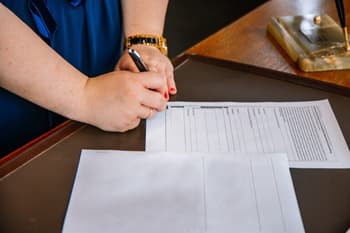Discovering that someone has infringed your trade mark rights can be distressing and potentially damaging to your business. Your trade mark is a valuable asset distinguishing your goods or services from your competitors. When another party uses your trade mark without permission, it can lead to consumer confusion and dilution of your brand. This article outlines the steps you should take if you believe someone has infringed your trade mark rights in Australia.

This guide explains the essentials of trade marks and the steps required to register a trade mark.
Confirm Your Trade Mark Rights
Before taking action, ensure you have valid and enforceable trade mark rights. You should:
- check that your trade mark is currently registered with IP Australia;
- verify that your registration covers the goods or services related to the alleged infringement; and
- confirm that you have been using your trade mark consistently to maintain your rights.
Gather Evidence of Infringement
Once you have confirmed your trade mark rights, you should collect comprehensive evidence of the alleged infringement. This may include:
- screenshots of websites or social media posts showing the infringing use;
- photographs of products or packaging bearing the infringing mark;
- copies of advertisements or marketing materials bearing the infringing mark;
- receipts or invoices from purchases of infringing goods or services; and
- any correspondence with the alleged infringer.
Document the dates and locations where you have observed the infringement. This evidence will be crucial if you need to take legal action.
Continue reading this article below the formAssess the Nature and Extent of the Infringement
Once you have collected evidence of the alleged infringement, you should consider the nature and extent of the infringement. Ask yourself:
- is the infringing mark identical or similar to yours;
- are the goods or services related to the infringement identical or similar to those covered by your registration;
- is there a likelihood of consumer confusion;
- how long has the infringement been occurring; and
- what is the potential impact on your business?
The answers will help determine the urgency and appropriate course of action.
Seek Legal Advice
Trade mark infringement cases can be complex, and the appropriate course of action depends on your circumstances. We recommend consulting with an experienced intellectual property lawyer who can:
- assess the strength of your case;
- advise on the best strategy for your situation;
- draft cease and desist letters or other legal documents; and
- represent you in negotiations or court proceedings if necessary.
Monitor for Future Infringements
After addressing the current infringement, consider implementing a strategy to monitor for future potential infringements. This may include:
- regular online searches for your trade marks;
- setting up Google Alerts for your brand and product name;
- monitoring trade mark applications through IP Australia; and
- professional brand protection services.
Key Takeaways
Addressing trade mark infringement promptly and effectively is crucial for protecting your brand. If you identify trade mark infringement, you should confirm your trade mark rights, gather evidence of the mark infringed, and consider your options carefully. Consider seeking professional legal advice to guide your strategy and ensure the best outcome for your business.
If you have any questions about maintaining your trade mark registration, our experienced IP lawyers can assist as part of our LegalVision membership. You will have unlimited access to lawyers to answer your questions and draft and review your documents for a low monthly fee. Call us today on 1300 544 755 or visit our membership page.
Frequently Asked Questions
How long do I have to take action against a trade mark infringer?
While there is no strict time limit, it is best to act promptly if your trade mark has been infringed. Delaying action could weaken your case.
Can I take action against someone using my trade mark overseas?
Trade mark rights are generally on a country-by-country basis. Your Australian trade mark registration only provides protection within Australia.
If you have registered your trade mark in other countries or through international systems like the Madrid Protocol, you can take action in those jurisdictions.
We appreciate your feedback – your submission has been successfully received.











